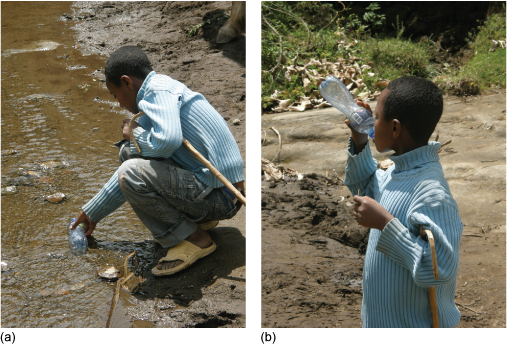1.2 Diarrhoeal diseases
Worldwide, there are about 2 billion cases of diarrhoeal disease every year, including cholera, dysentery (bloody diarrhoea), giardiasis and a long list of bacterial and viral causes. They are the second largest infectious cause of death among young children (Figure 1), killing about 1.4 million annually, 80% of them under two years of age (WHO, 2009c). Even in the USA, the richest nation on Earth, diarrhoeal diseases cause an estimated 38.4 million episodes annually and around 1700 deaths (Scallan et al., 2011).
The pathogens causing diarrhoeal diseases are transmitted in contaminated food and water and from hand to mouth (the faecal–oral route). A major underlying cause is the shaming fact that in 2010 around 780 million people (11% of the global population) lacked access to improved sources of drinking water (Figure 2), and 2.5 billion – 37% of the world’s population – had no access to basic sanitation (UNICEF and WHO, 2012). However, steady progress is being made: in the 20 years from 1990 to 2010, an estimated 2 billion people gained access to improved drinking water and 1.8 billion gained access to improved sanitation (i.e. a covered pit latrine or better). These changes are gradually reducing the impact of diarrhoeal diseases on children’s health.

